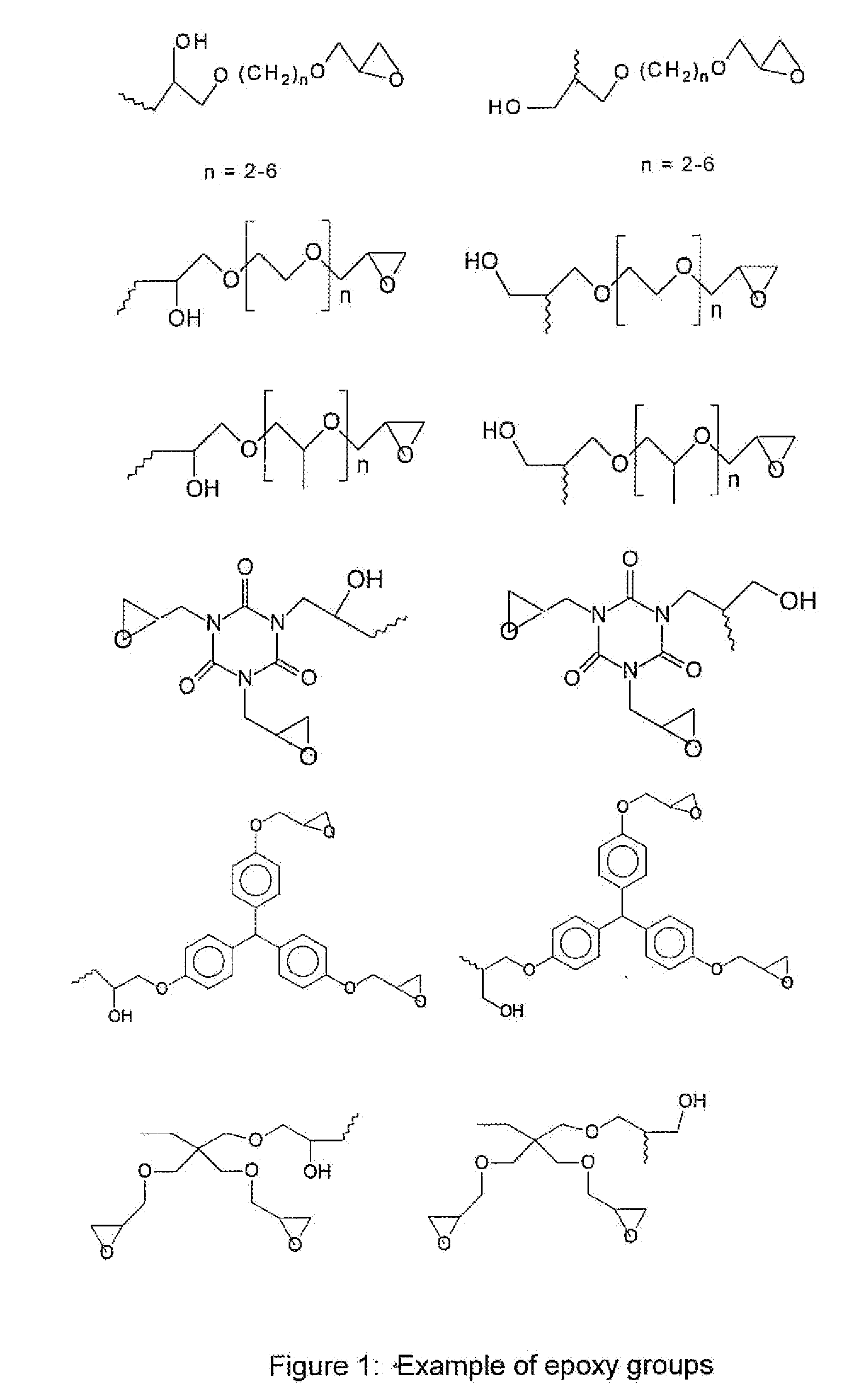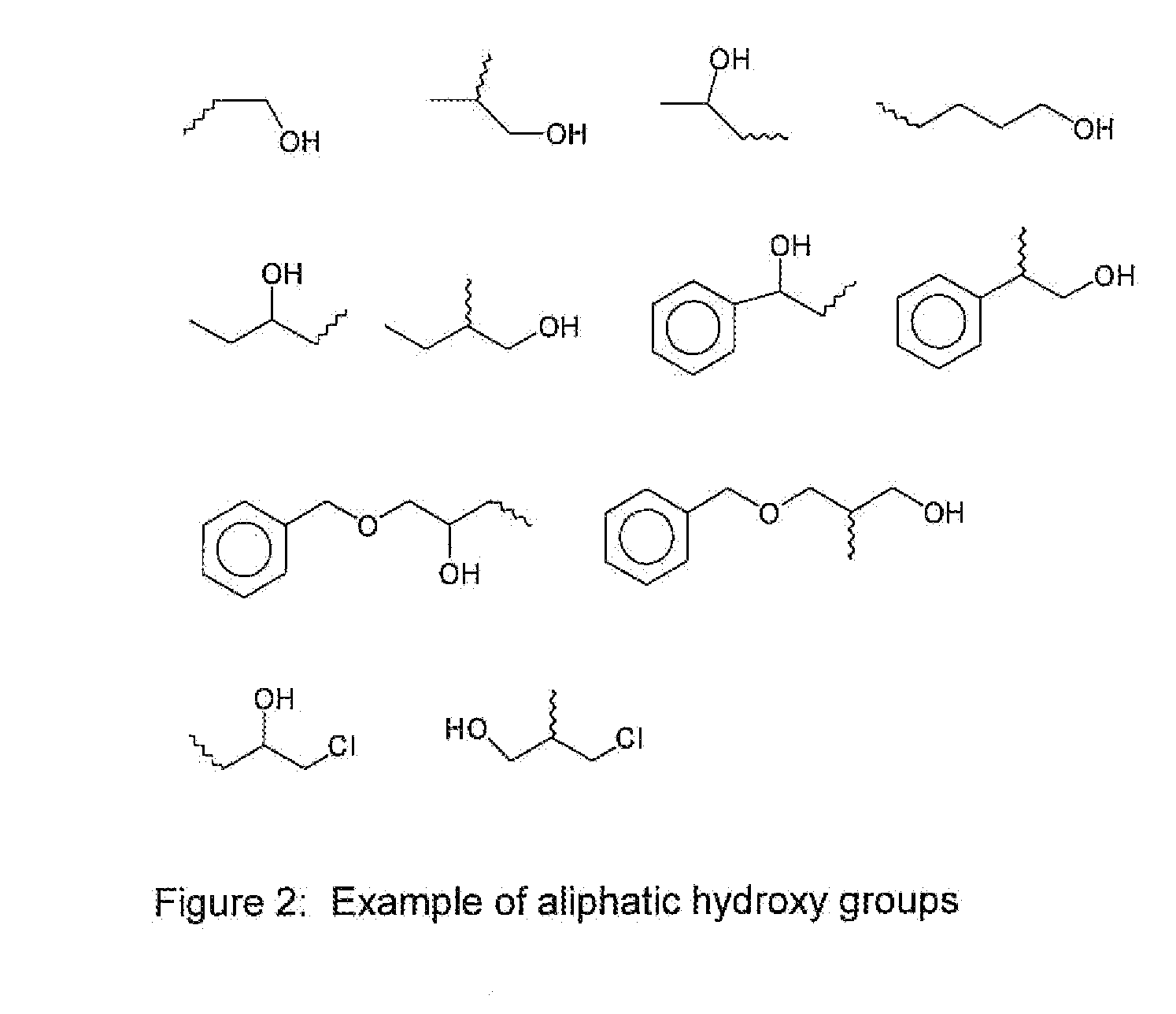Underlayer Coating Composition Based on a Crosslinkable Polymer
- Summary
- Abstract
- Description
- Claims
- Application Information
AI Technical Summary
Problems solved by technology
Method used
Image
Examples
synthesis example 1
[0067]
[0068]7.29 g (0.07 mol) of Styrene, 7.11 g (0.05 mol) of glycidyl methacrylate, 6.51 g (0.05 mol) of 2-hydroxypropylmethacrylate, 16.35 g (0.1633 mol) of methyl methacrylate, and 149 g of propyleneglycol monomethyletheracetate (PGMEA) were charged into a 500 ml flask fitted with a condenser, a thermal controller and a mechanical stirrer under nitrogen purge, 0.99 g of azobisisobutyronitrile (AIBN) was added and the mixture was heated to 90° C. and maintained for 18 hrs. Then, the reaction was raised to 100° C. for 1 hour. The reaction was cooled to room temperature and the polymer was slowly precipitated into water, collected and dried. 40 g of polymer was obtained with a weight average molecular weight (MW) of about 18,000 g / mol determined by GPC (polystyrene as standard).
example 1
Filling Example 1
[0069]A via filling composition was prepared by dissolving 5 g of the polymer prepared in Synthesis Example 1 and 0.05 g of triethylammonium salt of nonafluorobutane-1-sulfonic acid in 50 g propyleneglycol monomethyletheracetate (PGMEA). The solution was filtered through 0.2 μm filter. The filling performance of the formulation was evaluated with a substrate with vias patterned in it. The via sizes ranged from 130 nm to 300 nm in diameter, 650 nm in depth, and pitch (distance between vias) ranged from 1:1 to isolated vias. The solution was spin coated onto the substrate and baked at 200° C. to 225° C. for 90 seconds. No voids in the filling of the material were observed with cross-section scanning electron microscope (SEM).
synthesis example 2
[0071]13.5 (0.076 mol) of Benzyl methacrylate, 12.3 (0.087 mol) of Glycidyl methacrylate, 6.3 g (0.043 mol) of 2-Hydroxypropylmethacrylate, 0.71 g (0.005 mol) of butyl methacrylate, 36.5 g (4.06 mol) of methyl methacrylate, and 180 g of propyleneglycol monomethyletheracetate (PGMEA) were charged into a 500 ml flask fitted with a condenser, a thermal controller and a mechanical stirrer under nitrogen purge. 0.99 g of azobisisobutyronitrile (AIBN) was added and the mixture was heated to 90° C. and maintained for 18 hrs. Then, the reaction was raised to 100° C. for 1 hour. The reaction was cooled to room temperature and the polymer was slowly precipitated into water, collected and dried. 40 g of polymer was obtained with a weight average molecular weight (MW) of about 18,000 g / mol determined by GPC (polystyrene as standard).
PUM
| Property | Measurement | Unit |
|---|---|---|
| Nanoscale particle size | aaaaa | aaaaa |
| Nanoscale particle size | aaaaa | aaaaa |
| Composition | aaaaa | aaaaa |
Abstract
Description
Claims
Application Information
 Login to View More
Login to View More - R&D
- Intellectual Property
- Life Sciences
- Materials
- Tech Scout
- Unparalleled Data Quality
- Higher Quality Content
- 60% Fewer Hallucinations
Browse by: Latest US Patents, China's latest patents, Technical Efficacy Thesaurus, Application Domain, Technology Topic, Popular Technical Reports.
© 2025 PatSnap. All rights reserved.Legal|Privacy policy|Modern Slavery Act Transparency Statement|Sitemap|About US| Contact US: help@patsnap.com



